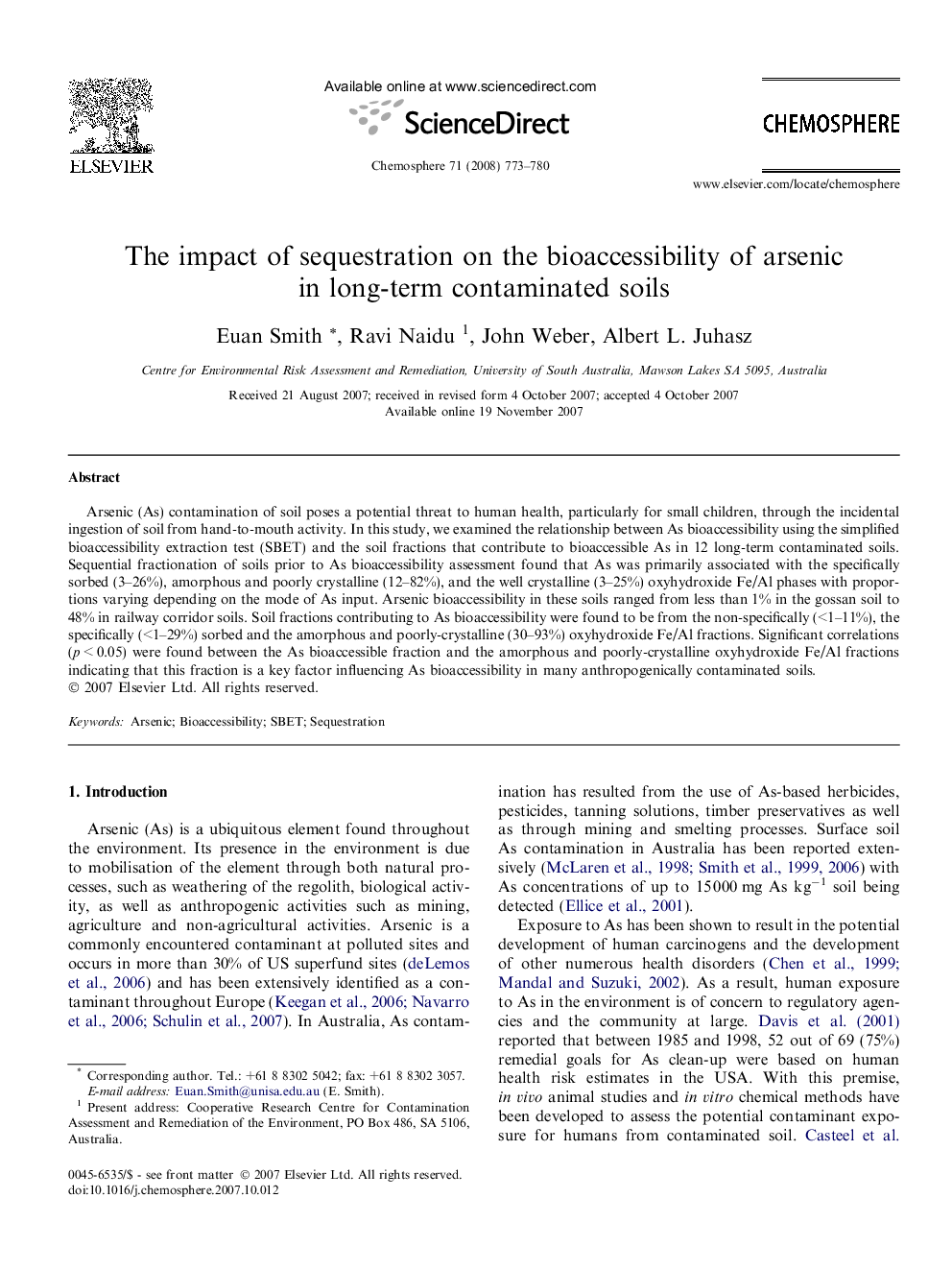| Article ID | Journal | Published Year | Pages | File Type |
|---|---|---|---|---|
| 4413913 | Chemosphere | 2008 | 8 Pages |
Arsenic (As) contamination of soil poses a potential threat to human health, particularly for small children, through the incidental ingestion of soil from hand-to-mouth activity. In this study, we examined the relationship between As bioaccessibility using the simplified bioaccessibility extraction test (SBET) and the soil fractions that contribute to bioaccessible As in 12 long-term contaminated soils. Sequential fractionation of soils prior to As bioaccessibility assessment found that As was primarily associated with the specifically sorbed (3–26%), amorphous and poorly crystalline (12–82%), and the well crystalline (3–25%) oxyhydroxide Fe/Al phases with proportions varying depending on the mode of As input. Arsenic bioaccessibility in these soils ranged from less than 1% in the gossan soil to 48% in railway corridor soils. Soil fractions contributing to As bioaccessibility were found to be from the non-specifically (<1–11%), the specifically (<1–29%) sorbed and the amorphous and poorly-crystalline (30–93%) oxyhydroxide Fe/Al fractions. Significant correlations (p < 0.05) were found between the As bioaccessible fraction and the amorphous and poorly-crystalline oxyhydroxide Fe/Al fractions indicating that this fraction is a key factor influencing As bioaccessibility in many anthropogenically contaminated soils.
